"Das Unbehagen an unseren Städten ist ziemlich allgemein"1 opined the German architecture and design theoretician Hans Eckstein in 1972, 'discontent with our cities is fairly universal', continuing 'it is growing day by day. Accusations and indignation are heard everywhere. It is almost impossible to ignore the amount of literature about the miserable condition of our cities.' Yet despite the apparent, certainly for Eckstein, urgency and ubiquity of the discontent, he laments that 'there are hardly any signs that this malaise could one day translate into behaviour, let alone action, that would give hope for a turn for the better.'
Hardly any signs, but some. Including the exhibition Profitopolis oder: Der Mensch braucht eine andere Stadt, Profitopolis or: We need a different city, a project initiated by architect Josef Lehmbrock and critic Wend Fischer, the latter the, then, director of Die Neue Sammlung, Munich, that premiered in Die Neue Sammlung in November 1971, and which reflected critically on contemporary cities and urban planning, was, as the subtitle announces, 'An exhibition about the wretched condition of our cities and the need to change this situation so that people can once again live in a city with human dignity'; and thus an exhibition that sought to be a stimulus for the 'turn for the better' a Hans Eckstein longed for.
And 50 years later?
Where are our cities today?
Where are the residents of our cities today?
How (dis)content are we with our cities today?
With the exhibition Profitopolis or the Condition of the City the Werkbundarchiv - Museum der Dinge, Berlin, reflect on the arguments of 1971 in the 2024 we became, on the paths from then to now, on the role of the Deutsche Werkbund then, since and now, and thereby enable space for reflections and considerations on not only why our contemporary cities are as they are, but possible ways forward in context of our cities and those who inhabit them.......
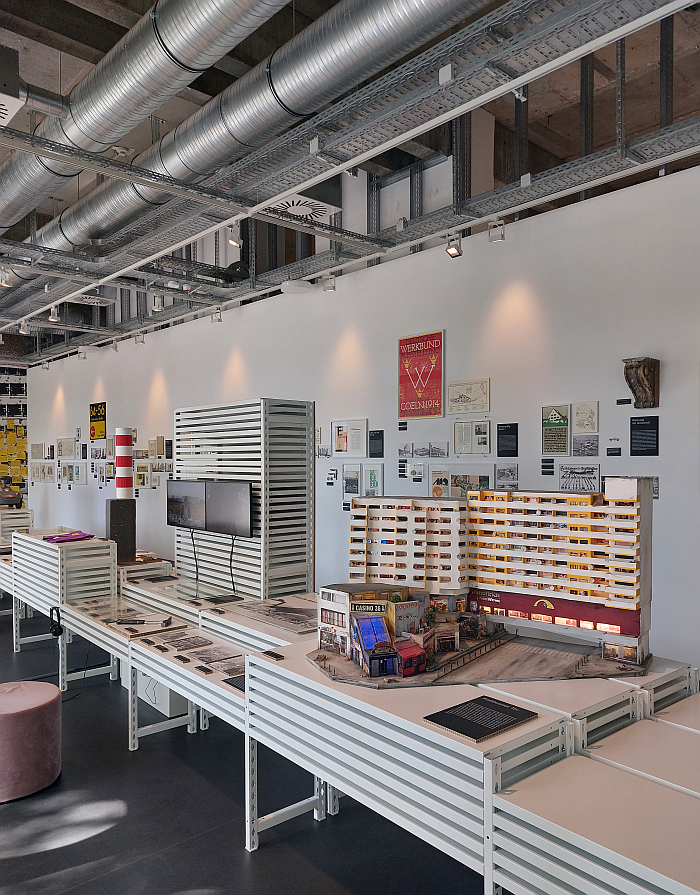
Reflections and considerations which open with a brief introduction to 1971's Profitopolis oder: Der Mensch braucht eine andere Stadt, an exhibition which in the course of 63 panels approached the contemporary city not just as a built environment but as a social environment2; 63 panels which opened with Lehmbrock and Fischer's cataloguing of, in their opinion, the problems of contemporary cities, the very first panel asking Sind unsere Städte noch menschenwürdig?, Are our cities humane?, and also opening with their analysis of the causes of the problems, not least what they refer to as Falsche Dominanz, False Dominance, that medical term for when that which should be recessive is dominant, or in terms of urbanism that which should serve rules, specifically Lehmbrock and Fischer criticise the False Dominance of profit, banks, land speculators and cars in questions of and decisions on urban planning, before panel 27 asks: Wer ist schuld? Who's to blame?
Lehmbrock and Fischer are clear in their answer: "Schuld is vor allem der Bürger". 'The citizens are primarily to blame'. And that because, for Lehmbrock and Fischer, in terms of the planning and design of our urban spaces, rather than proactively leading in our interests, we let ourselves be passively led by the interests of others.
Thus, asks panel 28, How can the citizen become the builder of their city?, panel 29 asking, What should be undertaken? and panel 30 adding, What do humans need in a city?
Three questions that lead into the second half of the presentation with its focus on Lehmbrock and Fischer's arguments for the way forward in terms of both the physical infrastructure of the city and also the relationships between that infrastructure and the residents of the city and also between the varying residents.
63 panels from which, or at least from a majority of which, arguments and positions are constructed, mediated and defended not just by Lehmbrock and Fischer but primarily via quotes from a wide variety of individuals from an equally wide range of disciplines, including, and amongst others3, the designer Otl Aicher, the psychologist Alexander Mitscherlich, the politician Hans-Jochen Vogel, the sociologist Hans Paul Bahrdt, or the urban sociologist Elisabeth Pfeil, the latter, as far as we can see, the only female voice deemed worthy of having something interesting to say on urban planning matters in 1971. Which may indicate a problem of urban planning Lehmbrock and Fischer overlooked. Arguably couldn't see from within the patriarchy of architecture and urban planning. There is certainly no panel: The Gender of the City. Which may in itself be as informative and instructive as that panel could have been.
63 Panels which serve less as a direct template for the exhibition Profitopolis or the Condition of the City as a framework for the staging of the exhibition Profitopolis or the Condition of the City.
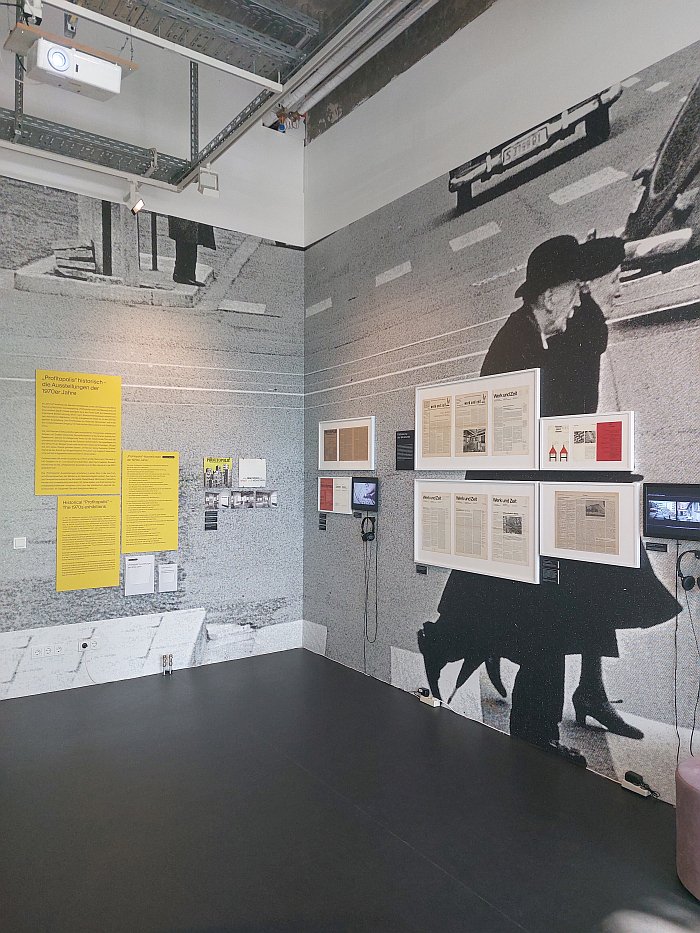
Or rather a framework for the exhibitions Profitopolis or the Condition of the City, for it is, they are, very much two presentations in one: the first a brief tour through the (hi)story of urban and spatial planning in Germany since the formation of the Deutsche Werkbund in 1907, a formation, as oft noted in these dispatches, initiated by a coalition, an amalgamation, of architects, designers and manufacturers as a response to the poor quality, and even poorer global reputation, of German industrial production of the period, a period when Made in Germany was an insult; a tour that through making stops at moments either undertaken by the Werkbund, by leading Werkbundler or in context of the positions of the Werkbund, such as, for example, the 1909 Hellerau garden city, the 1927 Weissenhofsiedlung in Stuttgart, the post 1939-45 War plans for rebuilding Berlin, or the large scale 1960s/70s high-rise housing estates Märkische Viertel in West-Berlin and Fennpfuhl in Ost-Berlin, develops an argument that whatever else the Deutsche Werkbund is and was since 1907 it was always about responding to social realities and questions of the built environment and of individuals and society in that built environment. And thereby a showcase that not only seeks to set both the 1971 and 2024 Profitopolis exhibitions in context of a long Deutsche Werkbund tradition, but also to approach an answer to the question posed in the 1970s as to how political the Deutsche Werkbund should be, a question that as one can glean in a 1974 article in the Frankfurter Allgemeine Zeitung by Julius Posener that has oft been posed over the decades, and a political aspect, Posener argues, that has always been at the core of what the Werkbund is and does, is inherent in what the Werkbund is, that the Werkbund always was, and always should be, political; whereby not party political, but in the sense of the anonymous voice of the 1980s Welsh mining community who in Public Service Broadcasting's They Gave Me a Lamp declares that "politics is life, and everything to do with it affects you. Directly or indirectly".4 Political in the sense that the built environment and the nature of and production of our objects of daily use are inherently political, are life.
An opinion echoed by Wend Fischer in the 1971 Profitopolis catalogue where he opines, "an exhibition that deals with the condition of our cities and the necessary changes to this condition is inevitably a political exhibition", adding "concern about the future of our cities is identical with concern about the future of our democracy".5
The second an exploration of spatial and urban planning decisions, processes, realities and consequences in Berlin Ost, West and Unified with three principle foci: Demolition and New Construction, the former initially being a, in many regards, unavoidable consequence of the 1939-45 War, the latter, and as discussed in and from Anything Goes? Berlin Architecture in the 1980s at the Berlinische Galerie, Berlin, seeing varying approaches to urban planning, and to popular public participation in urban planning, employed and tested in Ost and West, before the former picked up pace again after 1990 as the Berlins once again became Berlin, and that with questions as to how much had been learned from the experiences Ost and West of the 1980s?; Cars and Asphalt, one of the central themes in 1971 for all the question of the contemporary city as ""autogerecht" statt menschengerecht", '"Car-friendly" instead of human-friendly', a car friendly urban design that established itself in the 1950s as cars increasingly become a thing, a development discussed in these dispatches in context of the so-called Hanielgarage multi-storey car park in Düsseldorf by Paul Schneider-Esleben and the question as to whether cars should be allowed into the centre of the city or parked on the periphery with public transport bringing drivers to the centre, the argument for the former won the day in early 1950s Düsseldorf, as globally the car won 1950s arguments most everywhere, and thanks to the efforts of many Functionalist Modernist informed architects and urban planners the car was granted a primacy in urban planning decisions, a primacy that today is increasingly being questioned, challenged and rescinded, but also passionately defended, with the myriad associated issues such a fundamental debate brings with it. And long has. And Puddles and Plants with its focus on climate change and for all relationships with water in contemporary Berlin; and thus a climate change that notably wasn't a theme in the 1971 Profitopolis largely because it wasn't a theme in 1971, just as gender wasn't a theme in 1971. Yet climate change which urban and spatial planning has unquestionably contributed to and thus needs must be a component of approaching questions posed in 1971 such as, What should be undertaken?, Who's to blame?, Are our cities humane? in 2024.
And an exploration of spatial and urban planning in Berlin since the 1970s framed in context of a themed walk from Kottbuser Tor in Berlin-Kreuzberg to Leipziger Strasse in Berlin-Mitte, a route which is not only a route of significance for Berlin being as it is a walk across the former border and thereby a walk that enables, empowers, Profitopolis to reflect on not only the (hi)story of and contemporary realities in the former east and west sectors but also on the role of the unifying of Berlin in those contemporary realities, but a route also of significance to the Werkbundarchiv - Museum der Dinge being as it is a walk from their former home in Kreuzberg to their new home in Mitte, a relocation only of around 2kms, but a relocation against their will, a relocation enforced. And an enforced relocation that stands very much in context of the themes and subjects of Profitopolis 2024 and of Profitopolis 1971.
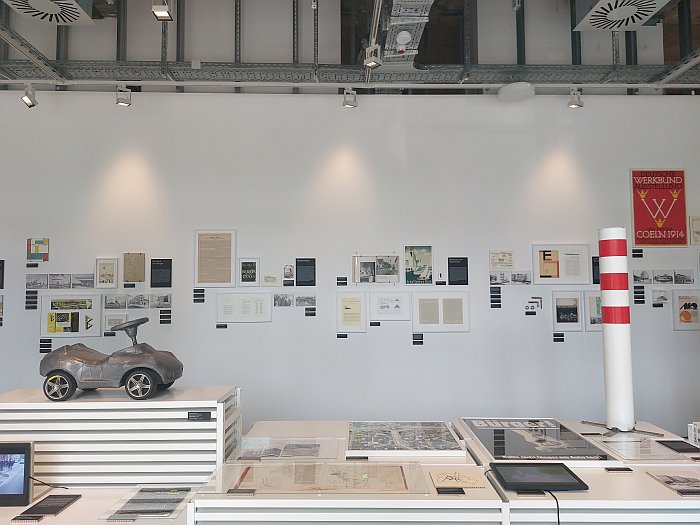
Formally established in 1973 and that, as can be read in Profitopolis in the institution's first Year Book, not simply to "collect and, ideally, evaluate Werkbund documents", but rather as an institution that "does Werkbund work by interpreting history. This is its approach to researching contemporary issues", there's that politics again, and also a nice bit of context for revisiting Profitopolis 1971 in 2024... formally established in 1973 the contemporary Werkbundarchiv - Museum der Dinge was based for many years in the Martin-Gropius Bau, directly on the Wall, before relocating in 2006 to an early 20th century commercial complex at Oranienstrasse 25 in the heart of Kreuzberg; a new home which in addition to providing a base for the collection and archive also allowed for permanent and temporary exhibition spaces, spaces for mediating the (hi)story of the Werkbund and also the Werkbundarchiv's contemporary research. And then, and as previously noted, anonymous investors bought the Oranienstrasse 25 complex and cancelled all tenancies. Why? Publicly there is no official reason; but it's not hard to imagine the financial gain to be made from a building complex such as Oranienstrasse 25, not hard to locate possible reasons in several of Josef Lehmbrock and Wend Fischer's analysis of the causes of the problems of contemporary cities, not least their focus on False Dominance.
However, for the tenants of Oranienstrasse 25 the reasons were initially of secondary importance. Much more important was the need to find a new home.
The Werkbundarchiv - Museum der Dinge found theirs in the Leipziger Strasse, a street, a district, that is defined in the section where the Werkbundarchiv - Museum der Dinge now resides by the eight 20+ storey apartment blocks, eight blocks built in the 1970s that once allowed views from Ost-Berlin over the neighbouring Wall, and also defined by the traffic that wasn't an issue in Ost-Berlin but is in Unified-Berlin. And also defined by the ever increasing number of galleries, art projects and creative studios that are taking up residency in the former commercial premises that line the Leipziger Strasse and were a key component of its planning concept; a settling of creatives in established urban communities, a transformation of a community through change of use that although it is a global aspect of the ongoing process of urban development is a particularly potent feature of the development of Berlin since 1990, and arguably is a missing chapter of Profitopolis 2024, Local Needs and Creative Spaces.
A new home on the Leipziger Strasse that is only meant to be temporary while a new, permanent, home is realised; but as anyone familiar with realities in Berlin will appreciate, temporary is an awful long time. Just ask the Bauhaus-Archiv.
A new home in which with Profitopolis the Werkbundarchiv - Museum der Dinge invite us all to reflect not only on the reasons for their relocation, but how those reasons relate to wider questions of urban and spatial planning in Berlin in the early 21st century, to reflect on questions such as, for example, and amongst others, where the priorities lie?, On what basis are decisions are made?, By whom?, For whom?, How are they subsequently assessed?, What should be undertaken?, Who's to blame? Are our cities humane?
And a new home on the Leipziger Strasse from which the Werkbundarchiv - Museum der Dinge invite, suggest, admonish, you set off on a walk, a stroll, back to the now (largely) empty Oranienstrasse 25 complex, a physical walk as an extension of the thematic one undertaken in Profitopolis; a physical walk very much in context of the Spaziergangwissenschaft, Strollology, of Lucius Burkhardt, an important Werkbundler and an early, and still highly informative and instructive, theoretician of urban planning as both political and intimately related to democracy, and a stroll, a walk, that is an opportunity to both reflect on the themes and issues approached and raised by Profitopolis in situ, on the actual ground, and also to better appreciate the contemporary condition of Berlin between Mitte and Kreuzberg.
And an invitation we accepted. Why wouldn't we? Why wouldn't you?
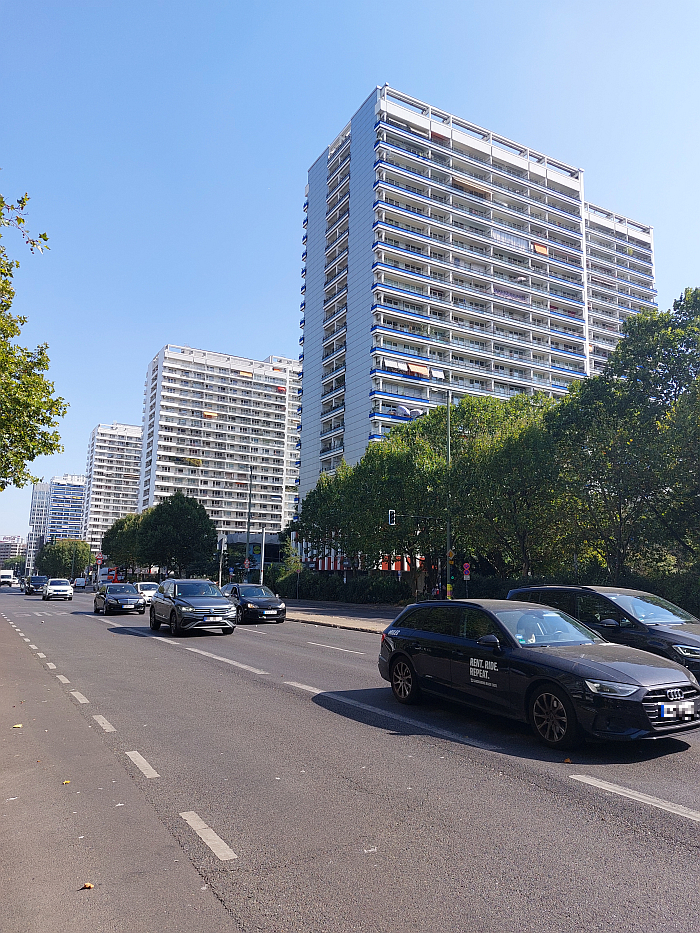
From their new home the route suggested by the Werkbundarchiv - Museum der Dinge takes you round the corner to the proposed site of Flussbad Berlin, a proposed conversion of the Kupfergraben section of the Spree Canal in the heart of the city into an urban outdoor swimming pool, and thus the adoption of an urban river swimming baths concept that an increasing number of cities are using by way of seeking to improve the urban environment and the quality of life for the citizens, and also providing a place to cool off on the ever hotter days that may very well define coming decades. Puddles and Plants and Pools to extend the chapter in Profitopolis.
A Flussbad to be based on the Spreeinsel between Spree and Spree Canal, to whose southern end, the so-called Fischerinsel, the route continues. A Fischerinsel that, as discussed in Profitopolis, was a site of large scale Demolition and New Construction in East Germany, including the construction of the so-called Ahornblatt, Maple Leaf, restaurant by the ever genial and glorious Ulrich Müther; an Ahornblatt that itself fell victim to the demolition ball in 2000, an impossible, unforgivable, act of premeditated violence to a fine example of the work of a key protagonist in the history of construction and architecture in the contemporary Germany who is in very, very, real danger of being forgotten. Which would be as unforgivable a reality as the demolition of the Ahornblatt.
Leaving the Spreeinsel the Werkbund - Museum der Dinge's stroll takes you through the Heinrich-Heine Viertel, an estate initiated in East Berlin in the late 1950s/early 1960s and on to the Otto-Suhr-Siedlung, an estate initiated in West Berlin in the late 1950s/early 1960s, and thus an excellent opportunity to compare and contrast the approaches to housing provision, and construction, in the two Berlins in a period whose popular focus is more normally the construction of the Wall you have just crossed. A chance to reflect on the two Berlin's as one united and not the one divided they are normally considered as. And two late 1950s/early 1960s estates whose authors had clearly very diligently read the 1920s and 30s estates of Functionalist Modernists such as the numerous Neue Frankfurt estates, thereby allowing one to appreciate how the pre 1939-45 War positions were taken up and developed post-War. And to reflect not only on what we can learn from the lessons the 1950s and 60s drew from the 1920s and 30s, but how the green spaces that were so central to urban planning of the 1920s and 30 provide relief for not only humans but the wider environment, make housing more humane and less intrusive. Puddles and Plants and Pools and People, to even further extend the chapter in Profitopolis.
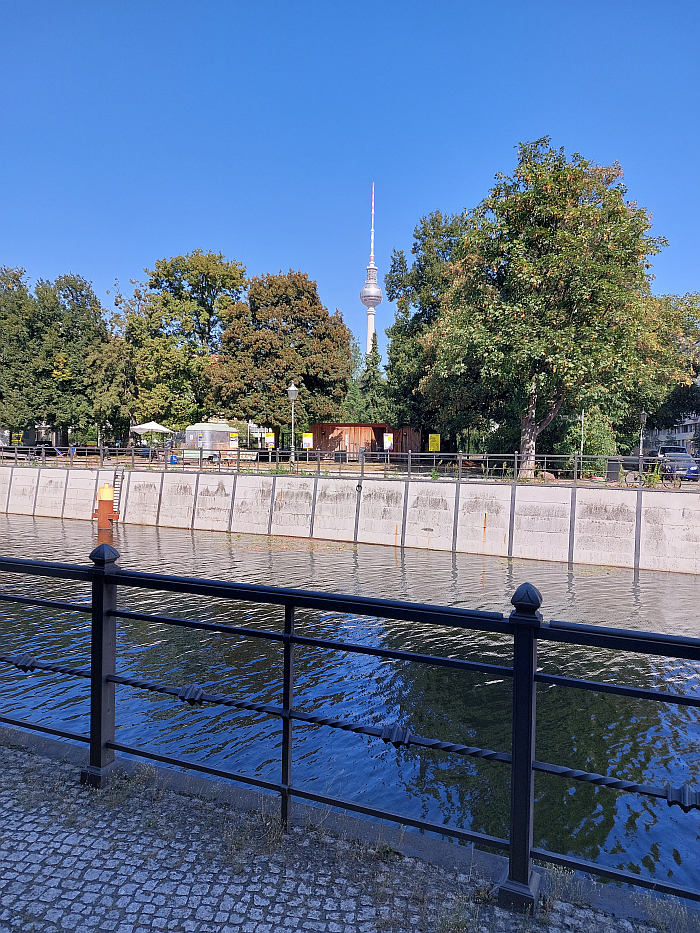
Between the Heinrich-Heine Viertel and Otto-Suhr-Siedlung the tour takes you past the so-called Fellini Residences, a project, unless we missed it, not included in Profitopolis, and where its inclusion in the stroll isn't instantly clear, but, and as with the unknown plans for Oranienstrasse 25, there are numerous indications to allow one to approach possible reasons why, once you are standing in front of it. Built more or less directly on the wall, and that in the (still) relatively unhip corner of Mitte, if a corner of Mitte that has long been discovered by property speculators, something underscored by the fact the Fellini Residences were completed in 2013, and exist as one of several projects, including several planned, coming, projects, by a developer of "luxury" apartments across Berlin, the Fellini Residences is a horseshoe-esque shaped complex inspired by Italian townhouses that with its profusion of balconies around a central courtyard formally looks out of place in Berlin-Mitte, or put another way, were the maple trees that stand in front of the complex palm trees, which as reflected on from Re:Generation. Climate change in a natural World Heritage Site – and what we can do about it at Park Sanssouci, Potsdam, they soon may well be, the Fellini Residences could stand in Monte Carlo, Malaga, Miami or Montreux. But are in Mitte.
And are a gated community. An exclusive housing estate directly next to inclusive housing estates such as the Otto-Suhr-Siedlung. Are a privatisation of the public city. And a gated community that thus stands conceptually diametrically juxtaposed to the Flussbad that is planned just a few hundred metres away. Do gated spaces and communal spaces, do private and public spaces, do exclusive and inclusive spaces, belong in the same city? Can they both be visions of the same city? Or is that exactly the challenge of urban planning, creating spaces for the variety and diversity of any and every population without hierarchies and coercion and compulsion? Creating pluralist cities where each has an equal say and freedom and identification. And is that not the challenge with our planet, of global society? Creating physical, personal, emotional, spaces for us all individually amongst, as components of and in harmony with, the spaces of others.
And if so, is that is why urban planning can't be a purely physical process, can't be formal, certainly not formulaic, but must approach an urban space not only in all its multi-layered, inter-related, complexity, but in its volatility, unpredictability, fickleness. And also accept that it is never, ever finished, is always ongoing and therefore must remain responsive and agile.
Thoughts that you can take with you to the communal garden on Moritzplatz, a garden that when it was established as Prinzessinnengarten was not just a, for want of a better phrase, revolutionary approach to urban spatial use, but, according to the Belgian critic and author Max Borka, a keen observer of the German capital, Prinzessinnengarten was an excellent example of a unique Berlin approach, one based around the development of "temporary, spontaneous architecture", of developing "solutions, about finding the tools of life", something that defined Berlin, and that, for Max, Berlin "isn’t about creating landmarks but is about the habitat, the way people interact with and relate to buildings". A thought that you should carry with you on your stroll as a viewing aid. As you should also carry his opinion that "Berlin has always been living in a crisis".
A Prinzessinnengarten project that despite its early promise hasn't become established as a standard model across the city, something we'd argue would and could be helpful; and a Prinzessinnengarten project that exists today as as two projects, the Offener Garten Moritzplatz on the original site and the Prinzessinnengarten-kollektiv in Neukölln, a fact, a dissolution of a vision into alternative interpretations of and approaches to that vision, worth reflecting on in context of organising and structuring public participation in urban and spatial planning decisions. Time moves on. Discourses develop in unseen directions. Things change. People change. But Berlin remains in a crisis.
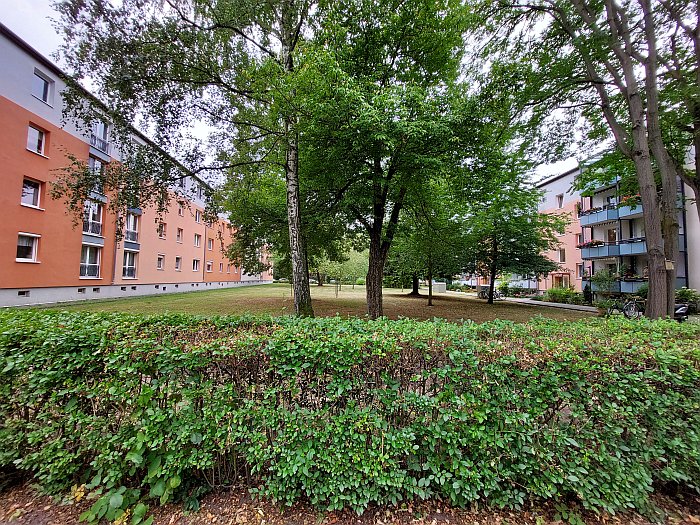
From the Offener Garten Moritzplatz the tour takes you past the original Betahaus, not officially on the Werkbundarchiv - Museum der Dinge's tour but a project that arose very much alongside and in dialogue with the Prinzessinnengarten as one of the first public fablab makerspaces in Berlin, and also one of the first non-commercial co-working spaces aimed at creatives in Berlin, that has now become a bit, ¿a lot?, more commercial, and global, and thus stands as an interesting context for reflecting on how urban communities develop, and of the relationships between global creatives and the city's they choose to base themselves in, Local Needs and Creative Spaces... from the Offener Garten Moritzplatz the tour takes you past the original Betahaus and on down Oranienstrasse to the now (largely) empty, and as such even more valuable than it was full, number 25. Or at least financially more valuable: the question of how one measures the 'value' of land being a further theme of Profitopolis 1971 and Profitopolis 2024, not least the question of the relationship between financial value and cultural value, that question inherent in the cancelling of the Werkbundarchiv - Museum der Dinge's Kreuzberg lease, and that question a Lucius Burkhardt once deliciously approached by holding a seminar at Kassel University in two car parking spaces in the street in front of the seminar building: what's more important, what's a more valuable use of space, education or parking your car in a city centre?
Thoughts on the balance between cars and humans in urban spaces, on the question of the primacy of cars or humans in urban spaces, on Lehmbrock and Fischer's False Dominance of cars in urban planning, initiated in Profitopolis you can consider more directly not only on the permanently busy Oranienstrasse but for all round the corner at the destination of the Werkbund - Museum der Dinge's stroll, Kottbuser Tor, a vast roundabout, if inadequately small for its intended function, ¿how big would it have to be to function? ¿what does that tell us?, and above which the U Bahn glides almost as a refutation of the demand for private transportation in urban spaces, as an irrefutable argument for public over private transportation. If the physical state of the U Bahn station serves as an all to unignorable reminder of why so many avoid urban public transport; and thus a reminder that encouraging more people to use public transport isn't just a question of ticket prices and journey frequencies but it concerns all aspects of the physical environment and personal experience. And a Kottbuser Tor that is home to the outrageous Neue Kreuzberger Zentrum, one of the coarsest constructions ever erected, a work that it is impossible not to have an opinion on; yet which if one approaches from the numerous perspectives it offers is also one of the more eloquent interlocutors with whom to approach the 21st century city.
And while Kottbuser Tor is the end of the route proposed by the Werkbundarchiv - Museum der Dinge, its shouldn't be the end of your stroll, nor should you stick all to closely to the proposed route as you stroll, for being as it is route through the former border districts and across what was not only a Wall but no-man's land, and thus an area that since 1990 has been one of the primary theatres for conflicts, compromises, experimentation, successes and failures in urban and spatial planning in Berlin, it's an area that offers an awful lot to explore, discover and reflect upon.
And a stroll that alongside that offered by Re:Generation in Potsdam is another mighty fine example of the power and of the enduring importance, value and relevance of Burkhardt's Strollology. A reminder that whereas in days of yore flânant, strolling, was undertaken so that the city could see you, today its about you seeing the city. Properly seeing it, not the fleeting glimpses we normally receive while dashing, pre-occupied, from A to B.
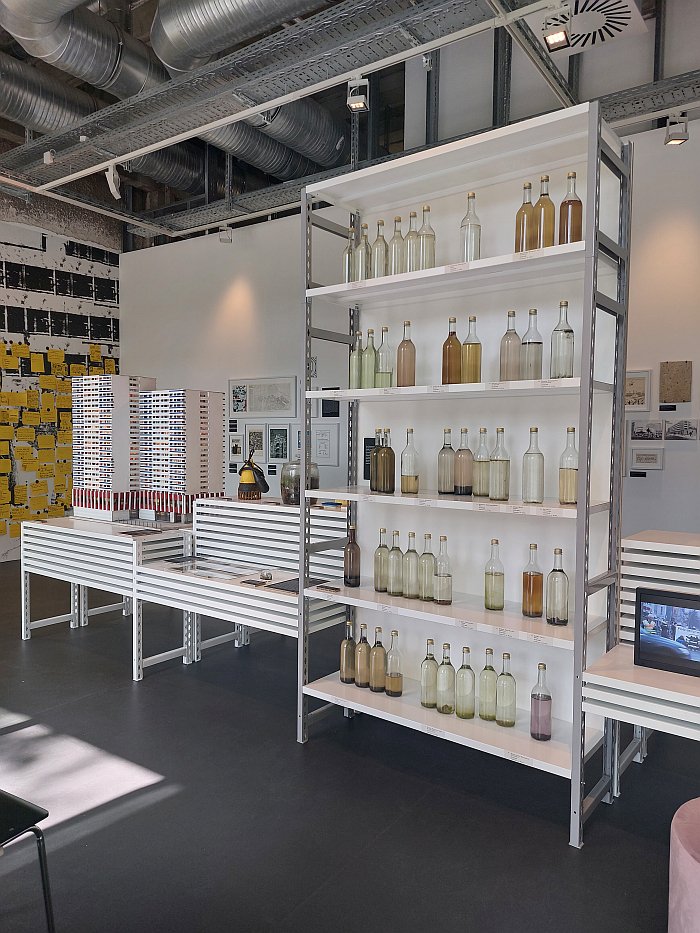
Presenting itself as a mix of texts, photographs, objects, films etc Profitopolis is a physically compact presentation, a fact not unrelated to the spatial limitations of the new temporary exhibition space on the Leipziger Strasse, a space larger than that in Oranienstrasse but still not easy to work, and still far smaller than that which an institution like the Werkbundarchiv - Museum der Dinge needs; albeit a physical compactness it more than makes up for through the variety and scope of subjects it covers, protagonists it introduces and perspectives it encourages you to consider. Whereby, yes, you have to do much of the work yourself afterwards, such as through strolling back to Oranienstrasse 25. In which context, yes, an a accompanying publication would have been useful and welcome.
A physical compactness negated, and an immaterial scope aided and abetted, by the very pleasing mixing of art projects through the documentations, including, and amongst others, Mirja Busch's Pfützenarchiv, Puddle Archive, an archive of puddle water collected across Berlin over the past decade or so as part of Busch's research into puddles and her development of a, the, ontology of puddles, work which, amongst other results, describes that puddles exist in two states: wet and dry. Which is a thought to take up, run with and see where it takes you. And while you run to reflect if wet and dry are analogous to present and absent. And a Pfützenarchiv in bottles that allows one to appreciate that a puddle ain't a puddle, but a very specific context with very detailed information to mediate. If one should therefore stop children jumping in puddles is another question.
And also by Berlin based, Oakland born, Tracey Snelling's mixed media models of the Leipziger Strasse 40 high-rise block and the Neue Kreuzberger Zentrum which define the start and end of Profitopolis's themed, and physical, tours; works by Snelling which explore and define buildings by the life that exists within them rather than their exterior form, arguably that shift in appreciations of the built environment since the founding of the Deutsche Werkbund, but which still gets lost in a popular focus on, a fetishising, of formal aspects and an ingrained formal viewing of the urban space. A focus and fetishising Profitopolis very much argues we needs must move on from.
A presentation that while, yes, is very much about Berlin, that is also what allows you to get out and explore for yourself, that allows you to extend the presentation and its discussions through your own experiences and observations, and also that which allows it to be a discussion on Berlin as one city with shared histories, rather than the two cities its often viewed as; yet despite being about Berlin the manner in which it explores its themes makes clear they are universal, can, should, must, be applied, and extended, in any urban space.
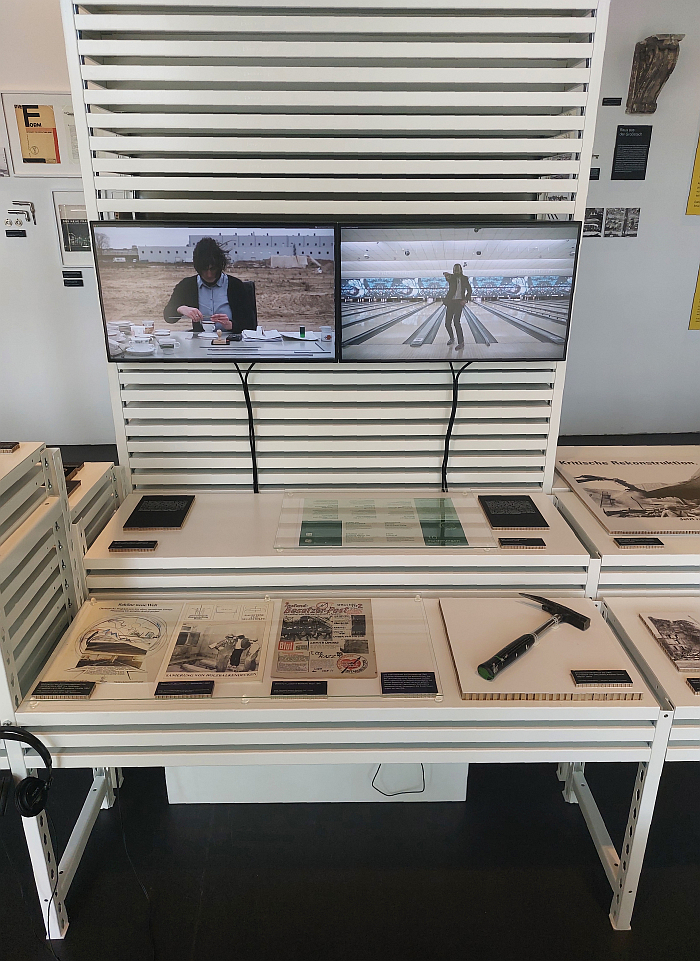
A presentation that, unlike Profitopolis 1971 doesn't itself take a position, but rather, and just like Profitopolis 1971, presents the positions, and practice, activity, of others by way of approaching themes, arguments, intersections, and thereby allows you to reflect on and develop your own positions. A presentation that in contrast to the Profitopolis 1971 doesn't propose ways forward, but is an invitation to discourse on those ways forward.
And a presentation that in asking how political the Deutsche Werkbund should be, and answering that it can't not be, that it inherently is on account of that with which it concerns itself, allows one to better appreciate than when the Deutsche Werkbund argue, argued, for a lack of ornamentation in objects of daily use, for example, or present their famed travelling case with ideals of designed objects, or advance their positions on urban planning, that is a political argument coming from a position, it's not a scared truth that can't be challenged but an argument all are invited to reflect on and to agree with, disagree with and/or reformulate.
As indeed are the positions of everyone else on architecture and design. Because architecture and design "is life, and everything to do with it affects you. Directly or indirectly". Something that isn't always acknowledged, but which Profitopolis tends to imply needs to be acknowledged if we are to develop the necessary discourse on the way forward for our urban spaces; to appreciate the no-one is right, we are all wrong to varying degrees, and thus how we unite those myriad wrongs to a meaningful approach at a way forward. A way forwrad that invariably won't be perfect, it can't be, but shouldn't make things worse.
And in being so and doing such not only tends to reinforce a Wend Fischer's argument that "concern about the future of our cities is identical with concern about the future of our democracy", but allows one to approach better appreciations that the condition of our democracy in 2024 is, when arguably not identical then certainly intimately related to, the condition of our cities, and that the paths of our democracy and our cities since 1971 are inter-twinned, and will remain so as we move forward.6
That Profitopolis or the Condition of the City could just as easily be Profitopolis or the Condition of Democracy.
And thus is an exhibition that not only argues for the need of us all to reflect on our cities, but the importance of us all contributing to our cities and articulating our ideas, our requirements, our demands, from and for our cities. And for all the importance, and necessity, of listening to our cities and to those with whom we share our cities.
Or as Profitopolis 1971 ended: Und Sie? And you?
A question to be answered. And a question to be posed.
Profitopolis or the Condition of the City is scheduled to run at Werkbundarchiv – Museum der Dinge, Leipziger Straße 54, 10117 Berlin until Friday February 28th
And from November 9th can be viewed together with the Werkbundarchiv – Museum der Dinge's newly designed and constituted permanent exhibition.
Full details can be found at https://museumderdinge.org
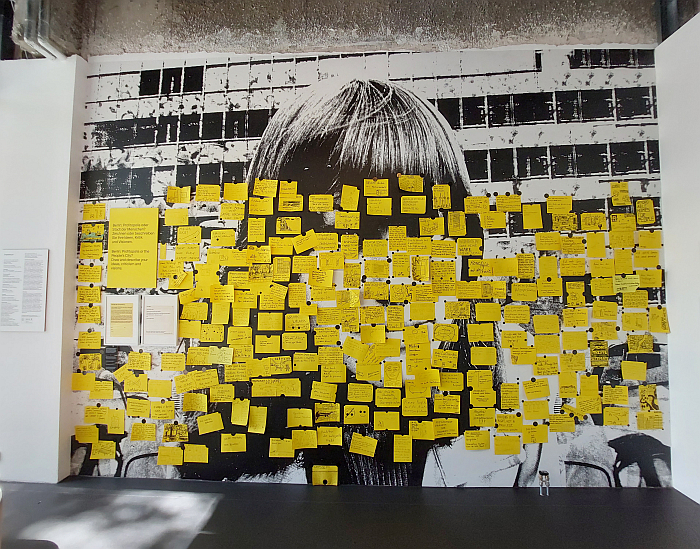
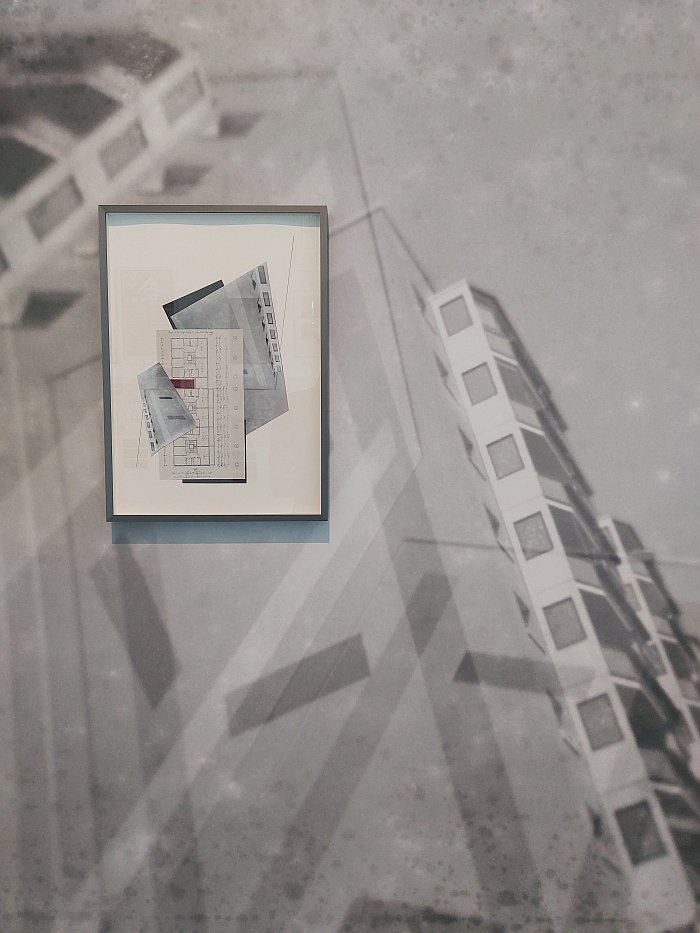
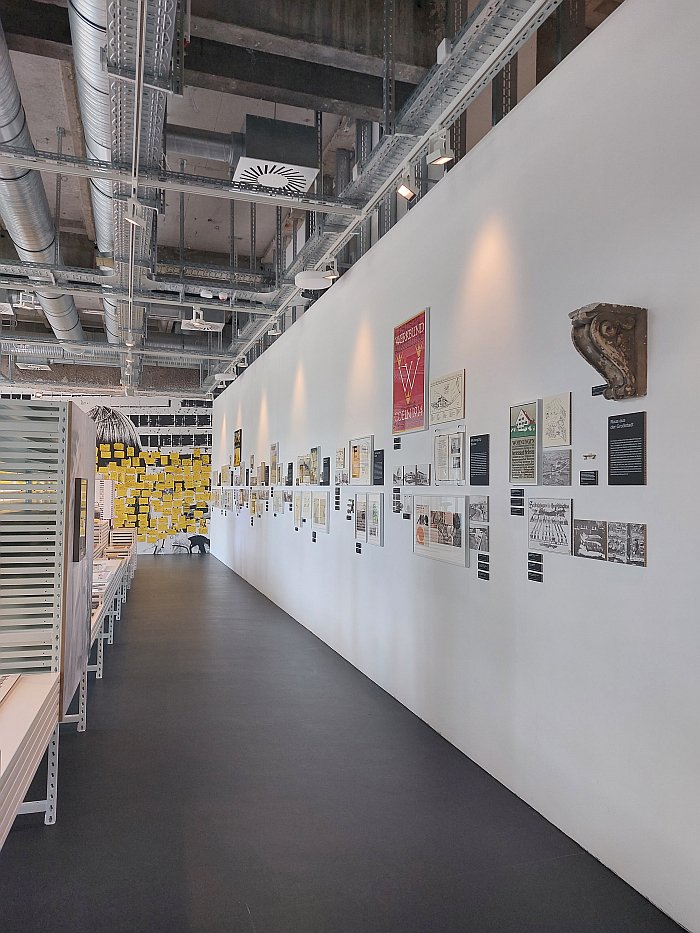
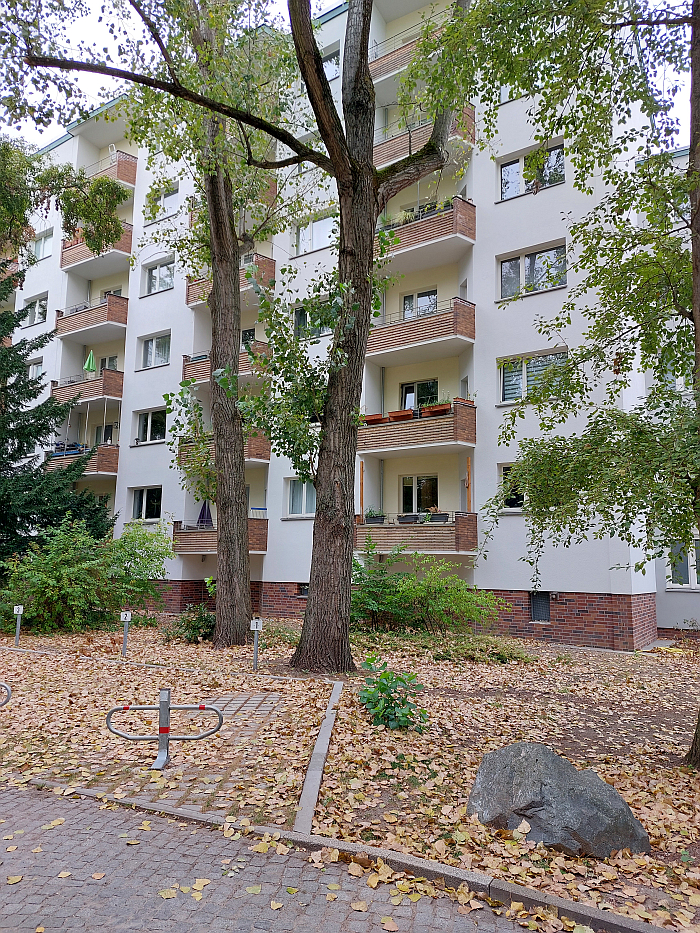
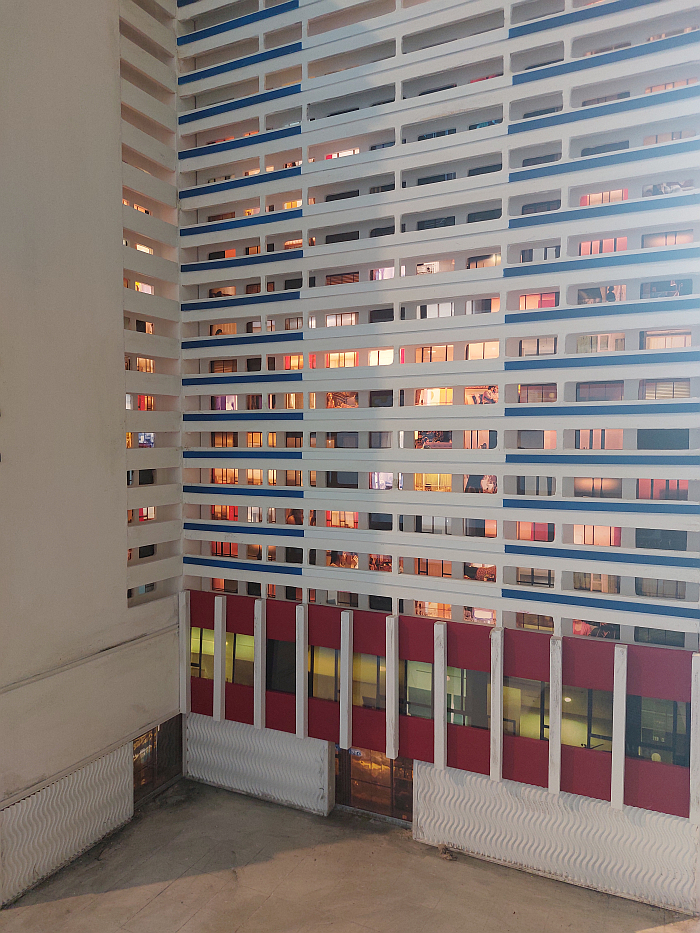
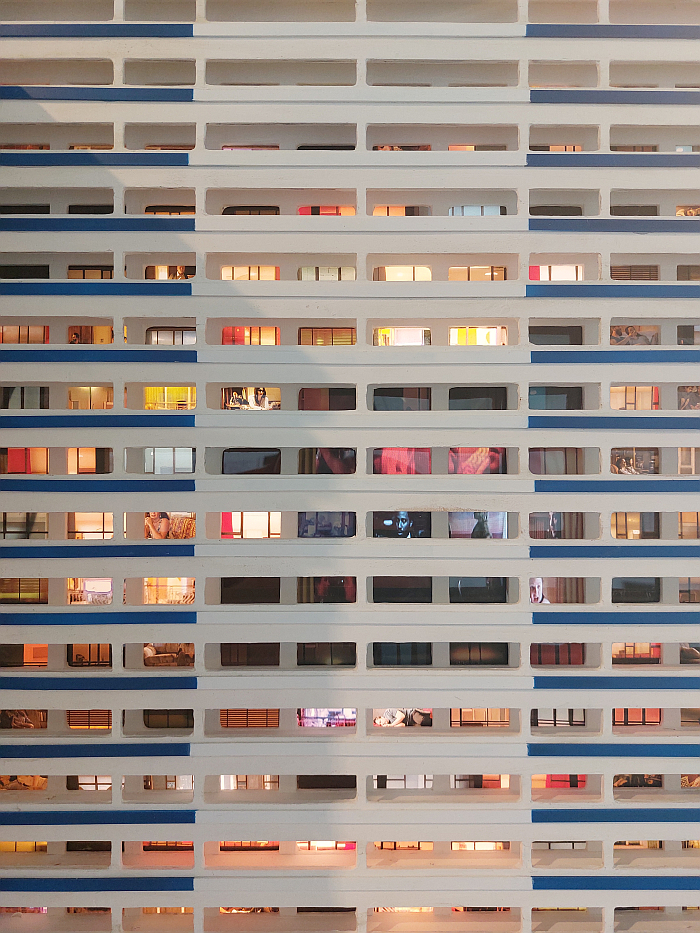
1Hans Eckstein, Profitopolis - Bestandsaufnahme und Analyse, Werk und Zeit, Vol. 21, Nr. 1 January 1972, page 1
2Or at least featured 63 panels according to the catalogue, we never saw the original exhibtion, see Josef Lehmbrock & Wend Fischer, Profitopolis oder: Der Mensch braucht eine andere Stadt, Die Neue Sammlung, München, 1971
3Also includes input from Albert Speer who is described as a "Stadtplaner", 'Urban Planner', which, yes, technically he was, but context is always important. And a silence on his principle claim to fame infamy, and his effortless inclusion in an exhibition, that speaks volumes for why it has taken so long to begin to fully investigate the NSDAP and urban planning, why in 2023 the exhibition Power Space Violence. Planning and Building under National Socialism at the Akademie der Künste, Berlin, could reveal new insights. Insights that should have been understood and reflected upon in 1971.
4Public Service Broadcasting, They Gave Me a Lamp (featuring Haiku Salut), on Every Valley, PIAS Recordings, PIASR970, 2017
5Wend Fischer, Zum Thema und zur Ausstellung, in Josef Lehmbrock & Wend Fischer, Profitopolis oder: Der Mensch braucht eine andere Stadt, Die Neue Sammlung, München, 1971
6Would also add, amongst all this focus on cities, the Condition of the Rural Space is clearly as important as that of cities in context of the Condition of Democracy, no-one would deny that, but the focus of Profitopolis is cities, specifically Berlin. Thus is also our focus in this text.